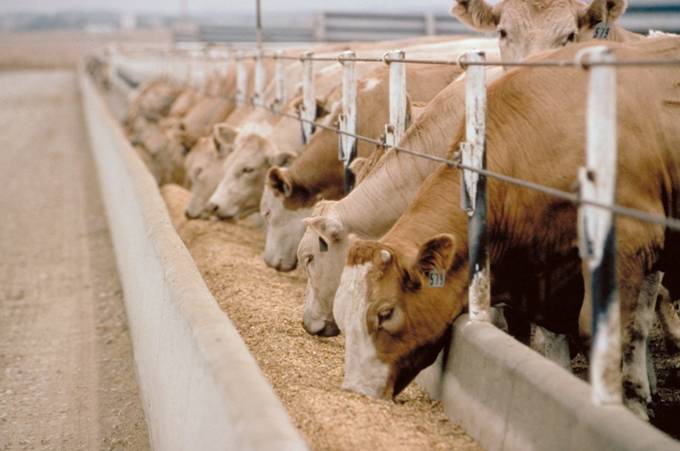
Agricultural News
U.S. Beef Markets Continue to Grow Globally
Mon, 14 Nov 2011 16:35:56 CST
 Expanding global beef markets continue to add strength to U.S. cattle and beef markets, according to Dr. Derrell Peel, Oklahoma State University Extension Livestock Marketing Specialist. The latest trade data released by USDA that monthly exports were up 27 percent in the month of September. This level exactly matches the year over year increase in cumulative exports for the year to date. Through the first three quarters of 2011, beef exports have represented 10.7 percent of total U.S. beef production. This percent is likely to grow slightly for the entire year as continued strong exports in the fourth quarter will be matched against declining beef production.
Expanding global beef markets continue to add strength to U.S. cattle and beef markets, according to Dr. Derrell Peel, Oklahoma State University Extension Livestock Marketing Specialist. The latest trade data released by USDA that monthly exports were up 27 percent in the month of September. This level exactly matches the year over year increase in cumulative exports for the year to date. Through the first three quarters of 2011, beef exports have represented 10.7 percent of total U.S. beef production. This percent is likely to grow slightly for the entire year as continued strong exports in the fourth quarter will be matched against declining beef production.
Perhaps as important as the beef export total, is the broad-based nature of the growth in those markets. In percentage terms, the fastest growing market in 2011 has been Russia, up 83 percent for the year to date. However, at that level Russia still only represents 5.6 percent of total beef exports this year. The major Asian markets of Japan (up 36 percent for the year) and South Korea (up 48 percent) are currently the third and fourth largest markets and either or both could overtake Mexico as the largest export market by the end of the year. Canada has already exceeded Mexico as the number one market for the year to date. Together Japan and South Korea represent 30.8 percent of total exports, slightly lower than the North American share of 35.7 percent for Mexico and Canada combined.
However, when the smaller Asian markets of Hong Kong, Taiwan, and Vietnam are added to Japan and South Korea, the total Asian market share of U.S. beef exports is 44.5 percent for the year to date. The fact that the bulk of U.S. beef exports is distributed fairly equally across four major markets (Mexico, Canada, Japan and South Korea) along with several growing smaller markets is very healthy for the industry. Exports to different countries represent different cuts and qualities of beef and thus provide the best chance for the market to maximize carcass value across diverse domestic and international markets. Moreover, a robust set of exports markets reduces the inevitable risk associated with export dependence as the role of exports markets continues to grow.
Can we expect beef exports to continue growing at the same pace in 2012? Probably not, mostly because it is very difficult to maintain double-digit growth rates for long periods of time. However, the growth is based on strong fundamental market demand in the various countries and that demand is likely to continue growing albeit at perhaps a somewhat slower rate in the next couple of years. U.S. beef provides a specific set of characteristics and a unique type and quality of meat that has few competitors in global markets. Continued political success in broader access to markets is also a key component to future beef export growth.
Recent announcements that Japan may ease age restrictions to meat from animals 30 months and younger should help maintain growth in that market in 2012. Longer term, access to mainland China would provide enormous market potential over time if not immediately. U.S. dollar exchange rates play an important role, especially in the short run with a weak dollar continuing to favor U.S. beef in export markets. The weakness of the U.S. dollar, especially relative to the Australian and Canadian dollars is perhaps more important to beef trade than is the more typical comparison of the dollar to the Euro. A strengthening of the U.S. dollar would likely moderate exports in the short run but does not change the underlying demand strength in global beef markets. U.S. beef exports will likely grow as a share of domestic production in the coming years, partly because of continued growth in exports, perhaps more moderately than the last two years, but also because of falling U.S. beef production.
Our thanks to Dr. Derrell Peel for providing this article over the U.S. beef market. This article was sent out as part of the Cow-Calf Corner Newsletter which is sent out by Dr. Peel and Dr. Glenn Selk on most Mondays.
WebReadyTM Powered by WireReady® NSI
Top Agricultural News
More Headlines...




















